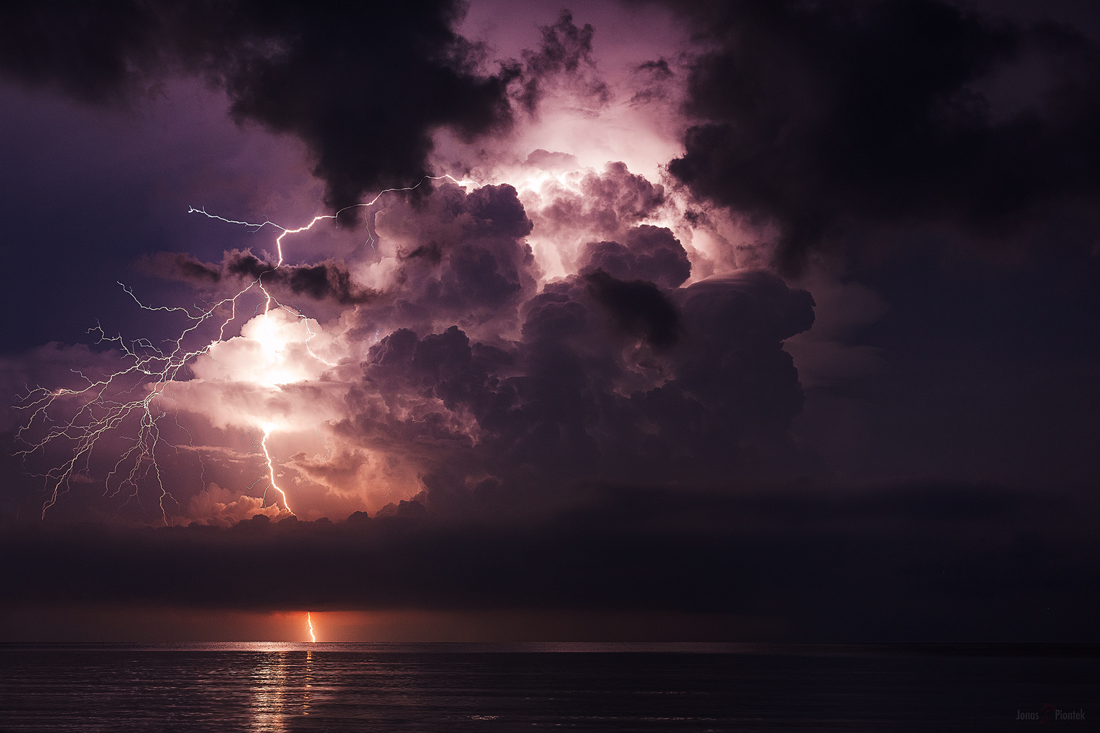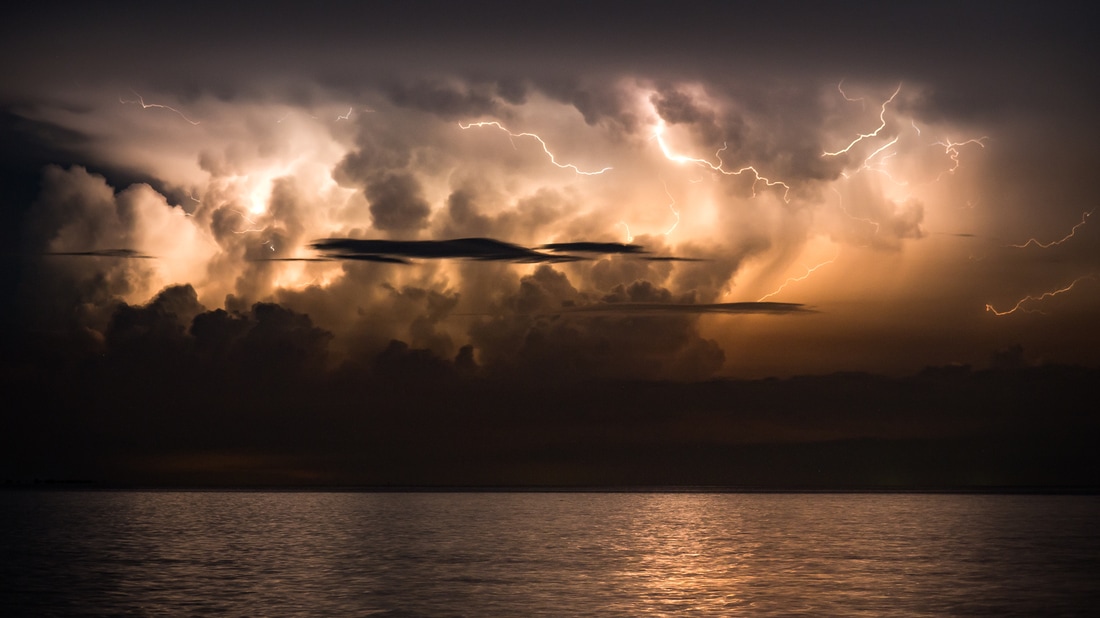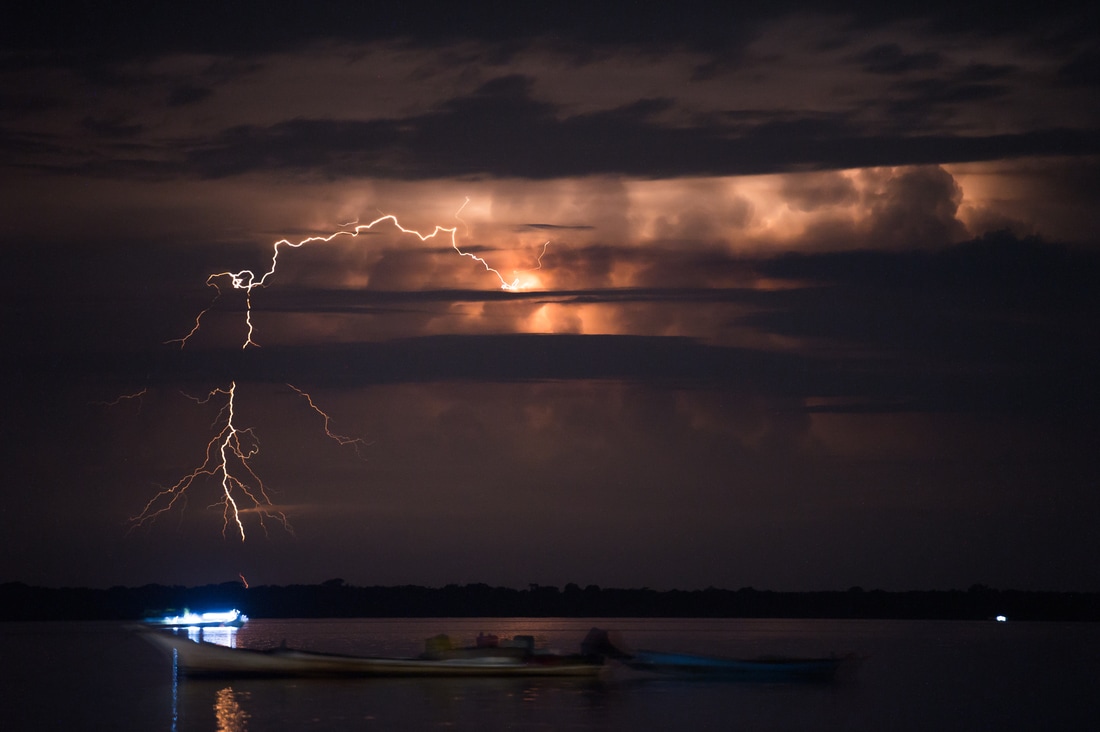Photographing Lightning
Many people have asked me over the time about how I get my lightning pictures and how I actually capture that fraction of a second on a photo. Now I want to clear out some rumors and make sure you can take some nice pictures, next time there is lightning around.
Shooting Lightning seems, according to the unpredictable occurrence and speed of this amazing phenomenon, like a hard task, but let me tell you - If you know how to shoot it, it becomes a lot easier to do than one might think. In this case I'm talking about shooting lightning at night.
-
What do you need:
- Camera (preferably DSLR) with a manual settings mode
- Tripod (Make sure it can withstand some wind, since you are shooting a storm)
- Optionally: Remote trigger for not shaking the tripod while shooting
- A good Storm with some decent lightning
-
As you can see, the list isn't very long, and at least for me, also doesn't include any form of lightning trigger or light sensitive devices. This is due to the fact that, while at daytime you might need a lightning trigger because it is too bright for long exposures, the key to a good lightning picture at night is the right setup for long exposures.
One of the questions I get to hear the most is: "How do you even press the shutter in that exact moment lightning strikes?" and I want to clear out, why this is exactly not what you should aim for while shooting lightning.
 13 Seconds, f9, Iso 1600 at 50mm with a Canon 5D Mark III
13 Seconds, f9, Iso 1600 at 50mm with a Canon 5D Mark III
Usually you should start with setting up your gear (camera on tripod, make sure it's all stable and also make sure, that the storm is far enough away to not pose an imminent threat of shooting a bolt at your position).
Determining the settings can become a bit tricky here, if you you never shot lightning before, so here is an easy overview on how to setup which setting depending on which variable:
Exposure Time
Setting the exposure time is very depending on the lightning rate you are facing. If you shoot a storm that is constantly shooting lightning you might want to go with a shorter exposure time, because if lightning illuminates the clouds multiple time during one picture, you will start to see the cloud moving, which can create some ugly ghosting or unsharp structures.

The aperture is depending on the brightness of lightning. Sometimes you might have a storm that is close by and shoots big, powerful and bright bolts, sometimes a storm that is far away and looses a lot of it's lightning brightness due to the distance. In case of very bright lightning you can go with a low aperture opening (f11-f18) and in case of distant lightning, I also went all the way down to f2.8 in the past. As my personal recommendation I can tell you that while you will have a lot of black frames in between, closing the aperture can be worth it, as you will go for the exceptionally powerful bolts, that might not spark that often but will give you once-in-a-lifetime pictures, that would have been blank white with the setting you'd usually use.

The light sensitivity is depending on two factors: The overall brightness of the surrounding and the strength of lightning. If you have powerful bolts as in the Aperture section above, I would not recommend picking a ISO that is too high, because otherwise the lightning will eventually overexpose. Apart from this, the ISO can control how much of the actual surrounding landscape you can see in the picture afterwards. With a higher ISO (I usually use around 1600) you might get some nice details in the foreground, but beware of your cameras ISO limits in terms of noise.

Reminder: Even though lightning pictures look amazing, make sure to always stay in a safe distance to a storm. Lightning can, in extreme cases, hit you even if you are 15km away from the actual cloud and getting struck by lightning can result in severe injuries and, in some cases, death. Please always stay safe while taking pictures of this force of nature!
